Deciduous Tree Species: Different Deciduous Trees To Know!

What are deciduous trees? The word deciduous relates to the word decadent, and both these words have a Latin root and mean fall. So, deciduous tree species are the ones that drop their leaves every year in autumn to save energy and enter a dormant period.
Natively found in tropical and temperate climates, deciduous trees drop their leaves in the dry season in subtropical and tropical forests. Some deciduous tree varieties undergo leaf abscission in fall in temperate forests.
Before shedding the foliage, their leaves briefly change their colors. Most types of deciduous trees have flat and broad leaves. It is in contrast to the conifers that have needle-like leaves. They trap a lot of light and have a good appetite for water. As opposed to the cones, the deciduous trees also bear seeds, flowers, or fruits.
Commonly found in Canada, eastern United States, most of Europe and specific areas of China and Japan, deciduous trees are also called hardwood or broadleaf trees.
Jump To
- Oak
- Poplar
- Maple
- Birch
- Aspen
- Beech
- Walnut
- Hickory
- Ash
- Willow
What Are The Common Features of Deciduous Trees?
- They shed their leaves in autumn.
- Deciduous trees have a warm and long growing season as one of their four distinct seasons.
- Deciduous tree varieties have a heavy moisture requirement.
- Deciduous trees have soil rich in moisture. When the leaves drop from the tree, they offer a steady nutrition source to the soil. Several species breeding in the soil break down these leaves into organic matter.
- They have broad-shaped leaves arranged in strata – ground, shrub, understory, and canopy.
- Its leaves filter the sunlight before hitting the ground.
- The plant curtails its growing season by avoiding photosynthesis when the leaves drop. They then enter dormancy.
- Four types of deciduous trees spotted in the deciduous forests are Oak, Southeast Pine, Central Hardwood, and Northern Hardwood.
Different Deciduous Tree Species
Here is a list of the 10 popular varieties of deciduous trees:
1. Oak
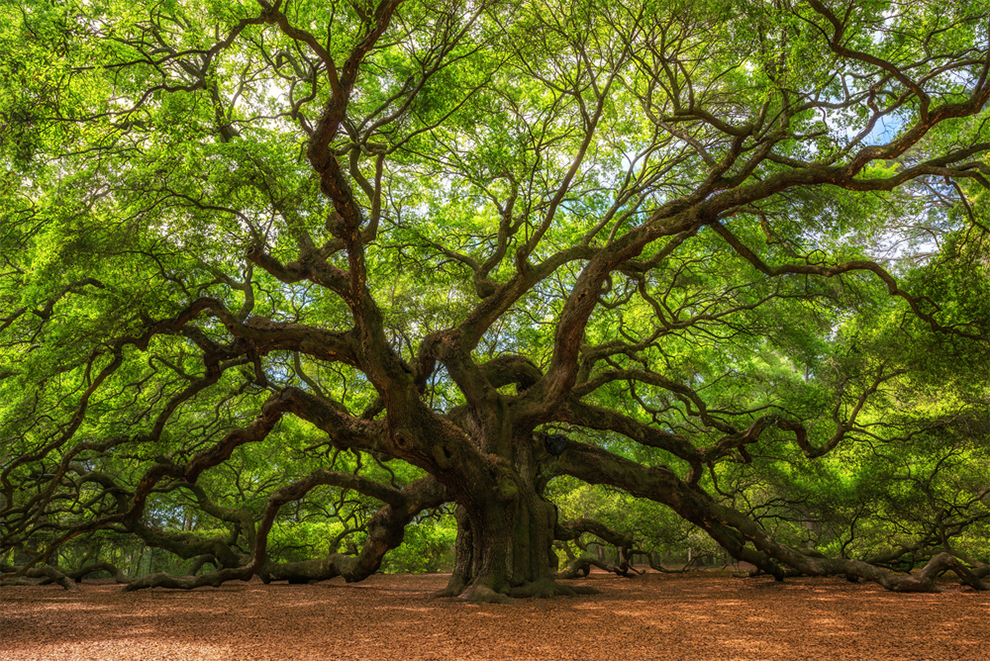
| Scientific name | Quercus |
| About the tree | Of the different deciduous trees, the Oak is one of the most popular in the world. There are over 300 known oak varieties in the world. Of them, fifty-five are native to North America, and the majority are in the eastern part of the United States. |
| Native to | Tropical latitudes in the Americas, Europe, Asia, and North Africa |
| Fruit/flower-bearing | Male Oak tree flowers appear like slender pale green catkins, and you can spot the female flowers on spiky stalks right behind them. Catkins develop with the first leaves themselves.
These deciduous tree varieties also bear fruits or acorns in the summer. However, acorns do not show every year. |
| Leaves | Oak trees have standout leaves with three-six unequal thumb-shaped lobes on both sides. In November/October, these leaves drop. |
| Soil | They prefer moist soil for growing. |
| Temperature | The ideal temperature range for oaks is between 40 to 60 degrees Fahrenheit. |
| Height | 30 – 40 meters upon maturity, and 100 ft in lifetime |
| Age | They have a long life and usually live for 100-300 years. After 400 years, they are considered ancient. Some oak trees even live for 1000 years. |
| Growth rate | They are fast-growing and grow 1 to 3 feet per year. |
2. Poplar
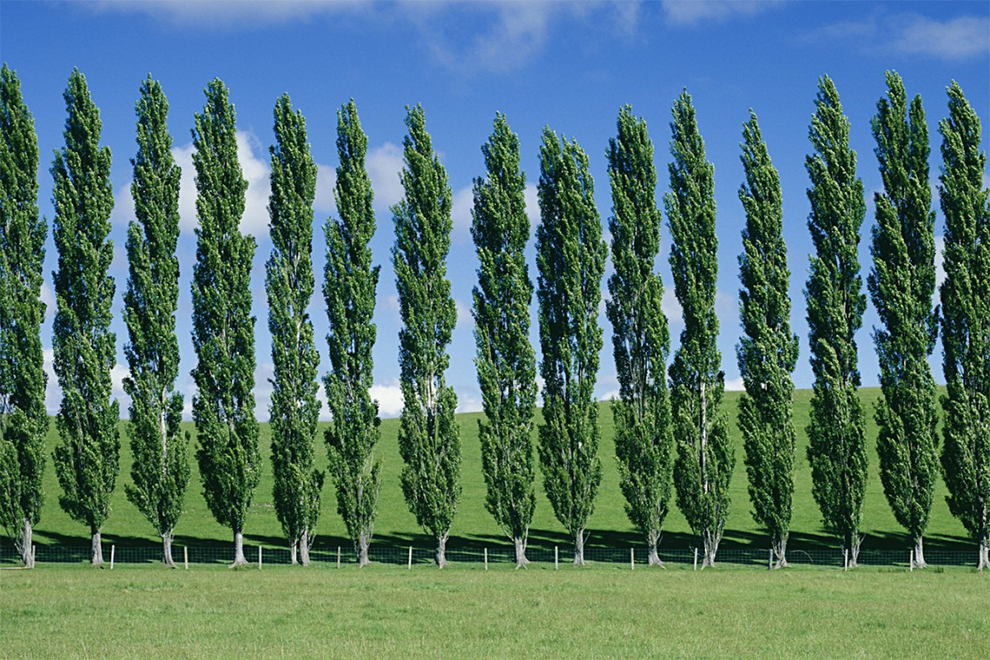
| Scientific name | Populus |
| About the tree | Poplar is another one of the most popular deciduous tree species. It belongs to the Salicaceae or Willow family and is a genus of thirty-five tree species. They cross-pollinate. Thus, the number of hybrids is endless. The variety is divided into three loose groups – Balsam Poplars, Aspens, and Cottonwood. |
| Native to | Most of the Northern Hemisphere |
| Fruit/flower-bearing | They bear both male and female flowerings, hanging to the plant during the spring in yellow clusters. |
| Leaves | They have heart-shaped leaves rimmed with tiny teeth. |
| Soil | Poplars need fertile soil, acidic or neutral, with moist roots. |
| Temperature | They can thrive in temperatures between 5°C to 45°C. |
| Height | You can find Poplars of varying heights between 50 and 160 feet. However, most Poplars are about 50 and 80 feet tall. |
| Age | Compared to the different deciduous trees, Poplars have a short lifespan of fifty years. |
| Growth rate | They grow at least six feet per year. |
3. Maple
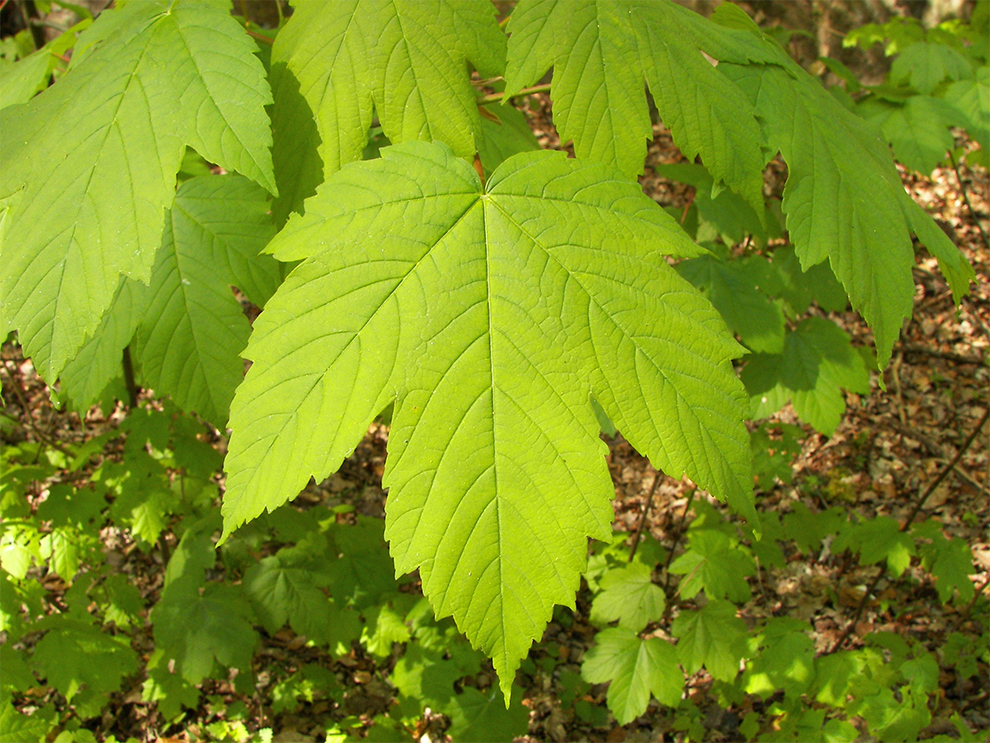
| Scientific name | Acer |
| About the tree | Of the deciduous tree species, Maples are the most popular. They belong to the Acer genus. Presently, there are over 100 Maple tree species in the world. |
| Native to | They hail from Asia, but most species are native to North Africa, Europe, and North America. |
| Fruit/flower-bearing | The fruits of maple trees are double samaras. Some varieties like Red Maple also produce flowers. |
| Leaves | Typically, Maple leaves have five points. As in the Japanese Maple, their shape may be lacy, slender, or wide in the Middle, like the Norway Maple. Regardless, each species has five finger-like or point projections. During the growing season, their leaves are green, but some Maples also have ruby-bronze or red leaves. |
| Soil | They like moist, deep, and well-drained soil for thriving. |
| Temperature | They can grow between the temperature ranges between -40°F (-40°C) and 100°F. |
| Height | Usually between 60-90 feet, but some even grow to 120 feet. |
| Age | Typically, maples live between 80 and 100 years. Some varieties like Red Maple and Sugar maple live for 300 and 400 years, respectively. |
| Growth rate | They grow 24 inches a year or less. |
4. Birch
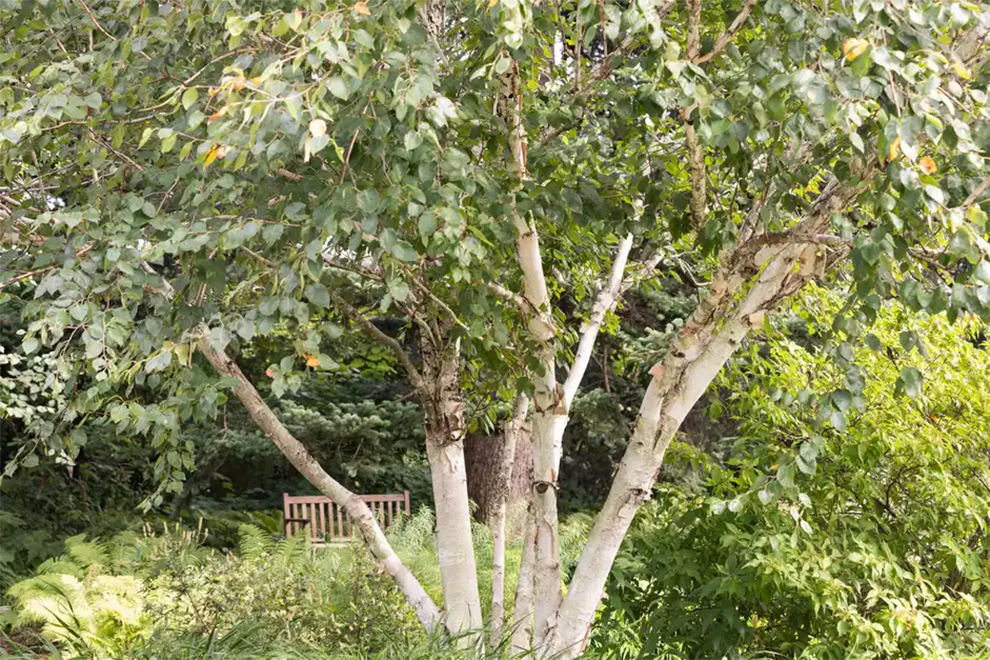
| Scientific name | Betula |
| About the tree | Birch is a short-lived tree that grows in USDA hardiness zones two through seven. Top birch species are white, silver, and paper birch. You can identify them by their leaves, flowers, and bark. |
| Native to | These deciduous tree species are native to Northern part of North America |
| Fruit/flower-bearing | Birch trees produce a fruit called “samara. They have both male and female flowers in the form of catkins. |
| Leaves | You can distinguish them from the different deciduous trees by looking at their leaves. Birch leaves are triangular and have jagged-looking edges. |
| Soil | Birch trees need moist, sandy, and loamy soil. The soil should be slightly acidic. |
| Temperature | They adapt well to the cold and can grow between -20 to -30 degrees Fahrenheit. |
| Height | Typically, Birch trees are 40 to 70 feet tall and have a width of 35 to 60 feet. |
| Age | Birch lives between 40 and 50 years. |
| Growth rate | Birch trees grow 13″ to more than 24″ a year. |
5. Aspen
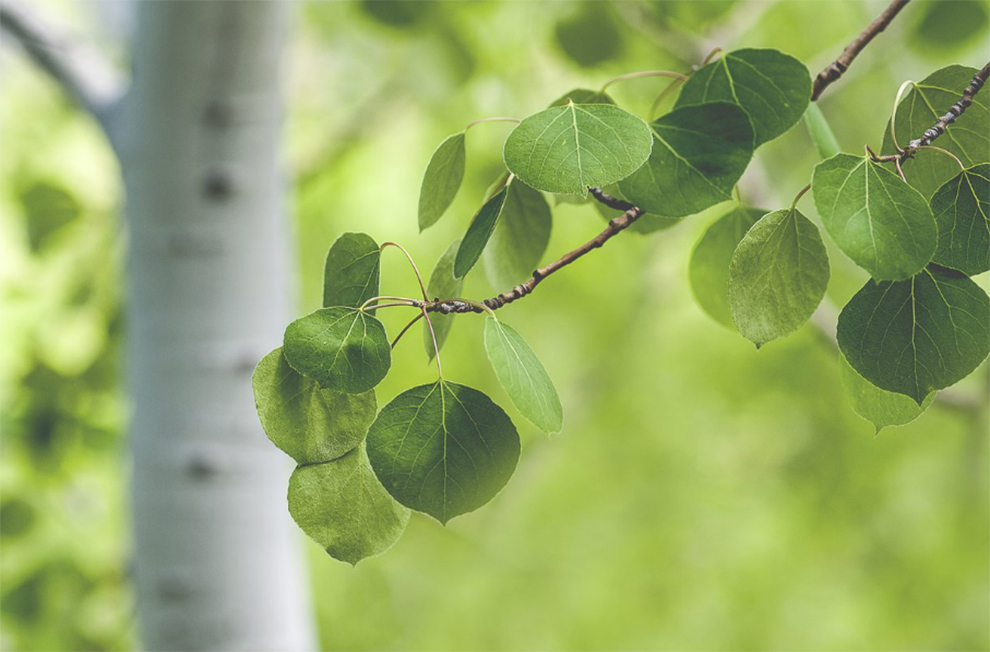
| Scientific name | Populus tremuloides |
| About the tree | Aspens are mid-sized, deciduous trees and can grow even in colder climates. They mostly grow in environments dominated by coniferous tree species. |
| Native to | Aspens grow across North America, from Canada, through the United States, to Mexico, in various habitats. |
| Fruit/flower-bearing | Aspen produces small flowers on catkins about 1-2 inches long during spring. Both female and male flowers are on separate trees. Female flowers yield small fruits after fertilization. |
| Leaves | Aspen has one of the most beautiful leaves from the different types of deciduous trees. They are glossy, smooth, round, and green with a pointed tip. Their leaves grow between 1.5” to 3”. |
| Soil | They can thrive in various soils but usually prefer sandy and gravelly soil. |
| Temperature | They survive in temperatures between -30 and 23 ℃. |
| Height | 20 to 80 feet with a 24-inches spread |
| Age | Typically, they live for 150 years, but some have survived two centuries. |
| Growth rate | Amidst the different deciduous trees, Aspens have a fast growth rate and grow 24″ per year. |
6. Beech
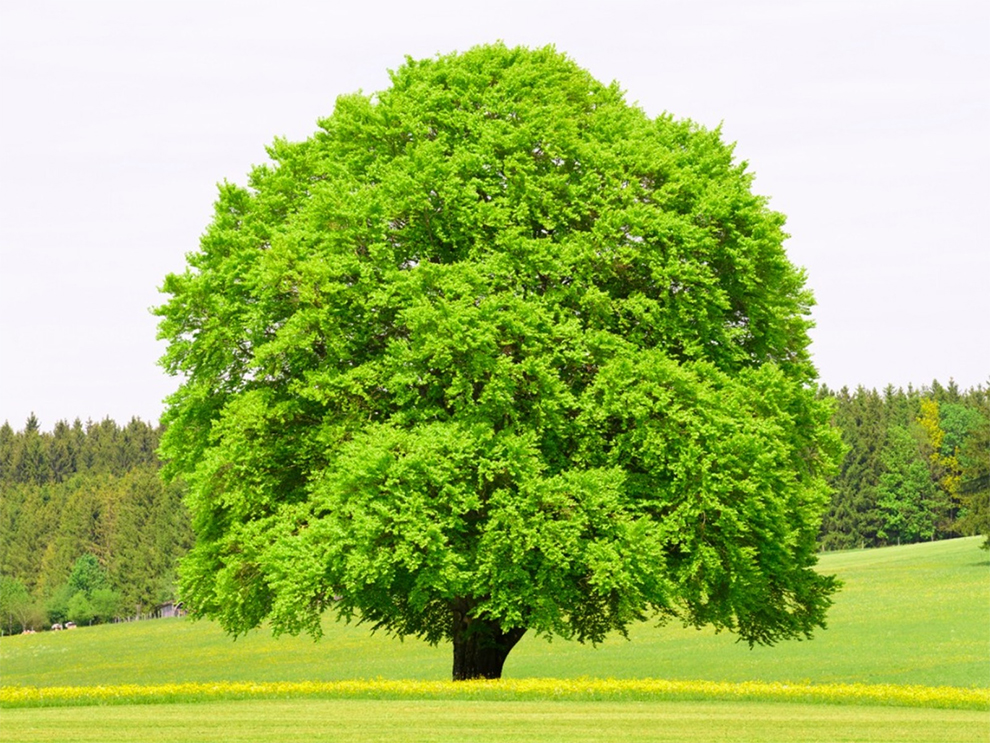
| Scientific name | Fagus |
| About the tree | There are different types of deciduous trees, but the beech holds a special place in many hearts. These wide-spreading canopies are excellent shade plants. You can spot these versatile trees in the acreages, golf courses, parks, and the forestry industry. |
| Native to | Temperate Europe, Asia and North America |
| Fruit/flower-bearing | Beech blooms in the early spring as their leaves unfold. The male flowers are yellow, small, and bundled together in a ball shape, and the female ones are relatively smaller. You can spot them at the tips of the newer twigs. |
| Leaves | Beech trees have finely toothed margins and have an ovate to elliptical shape. Usually, glossy dark, green color, they change their colors to yellow, copper, and stunning bronze colors in fall. |
| Soil | These are drought-sensitive and thrive in acidic, loamy, moist, sandy, silty loam, well-drained, and clay soils. |
| Temperature | Beech can grow in extremes lower than -42° C (-44° F) and 38° C (100° F). |
| Height | These grow to a height between 50 and 70′ with a spread of around 40′ at maturity |
| Age | Usually, beech lives for 350 years, but they show ancient characteristics from 175 years and are called archaic from 200 years onwards. |
| Growth rate | These are slow to medium growth deciduous tree varieties that grow 12″ to 24″ annually. |
7. Walnut
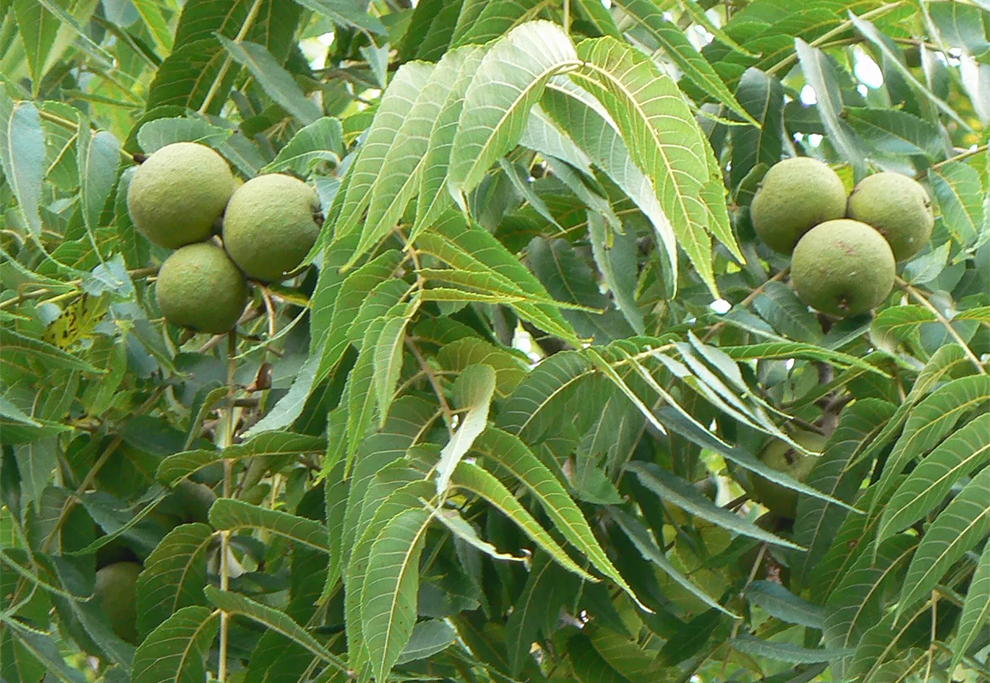
| Scientific name | Juglans |
| About the tree | Walnuts are giant deciduous trees, having a rounded canopy of lush green foliage. They have twenty-one varieties. Of the different deciduous trees, the most prevalent ones are the English walnut and black walnut. |
| Native to | Colombia, Ecuador, and Peru |
| Fruit/flower-bearing | Walnuts yield flowers in late May. They produce both female and male flowers on a single tree. The walnut fruits are not a nut, but drupes, stone fruit with a fleshy exterior. |
| Leaves | Walnuts have dark, ridged bark, and pinnate feather-like leaves. |
| Soil | Walnuts thrive in sandy loam, loam, or silt loam textured soils. |
| Temperature | They grow in USDA hardiness four through nine from temperatures -30 to +30ºF (-34 to -1ºC). |
| Height | Up to 130 feet, but predominantly up to 50 to 65 feet |
| Age | Walnuts reach maturity at 150 years. |
| Growth rate | These types of deciduous trees usually grow between 13 and 24″ per year. |
8. Hickory
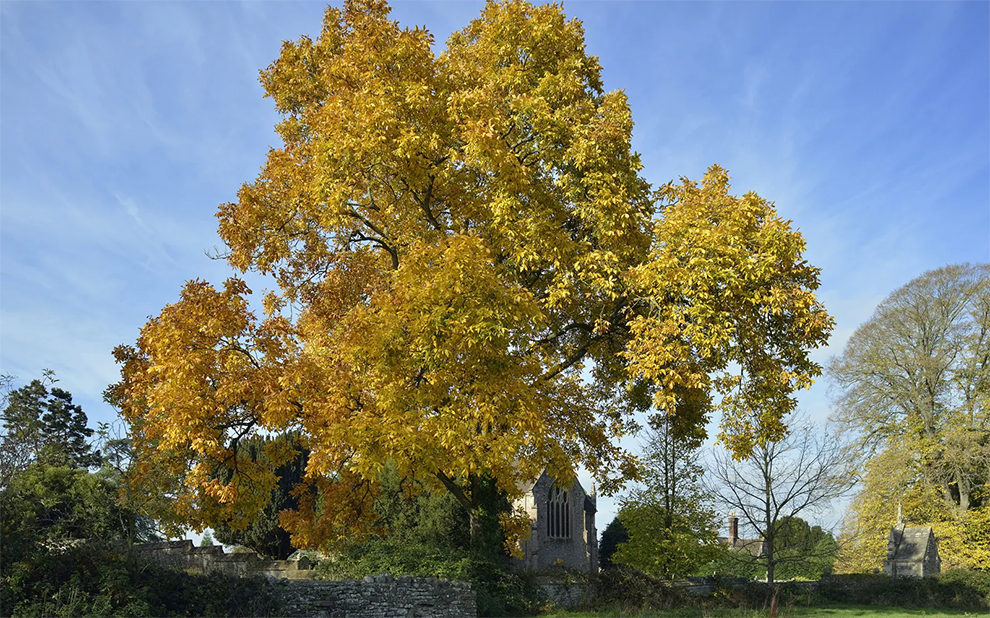
| Scientific name | Carya |
| About the tree | Hickory is a beautiful plant with about 18 species. They have unisex flowers, and both male and female variants are on a single tree. |
| Native to | China, Indochina, India, United States, Canada, and Mexico |
| Fruit/flower-bearing | Hickory fruits have hard-shelled nuts and both male and female flowers. |
| Leaves | These deciduous tree species have long, about seventeen pointed leaflets that grow oppositely on every leaf stem. |
| Soil | They can tolerate most soil types but require good drainage. You will see them thriving in acidic, alkaline, loamy, moist, rich, sandy, wet, and clay soils. |
| Temperature | Hickory can tolerate temperatures from -40 degrees Fahrenheit to 115 degrees Fahrenheit. |
| Height | On average, they can grow 60 and 80 feet but may grow up to 120 feet. |
| Age | They may live as long as 200 years, sometimes even 300. |
| Growth rate | They have a slow growth rate, less than 12″ per year. |
9. Ash
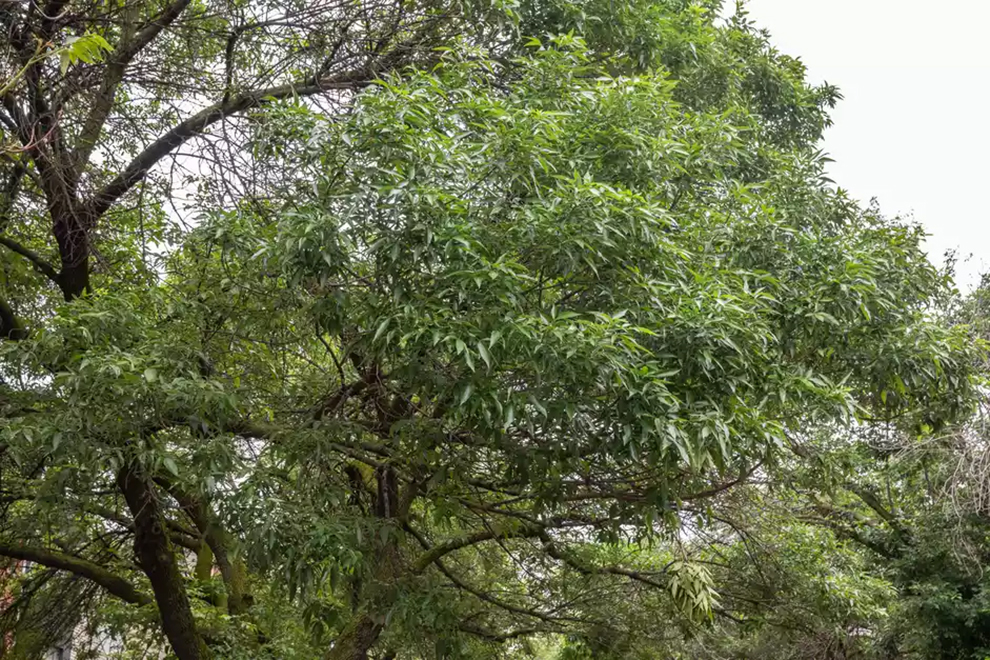
| Scientific name | Fraxinus |
| About the tree | Ash is a genus of flowering plants from the Oleaceae family. There are some 45-65 species, and most varieties are large to medium. Typically deciduous, some Ash varieties may also be evergreen. |
| Native to | Cape Breton Island, Nova Scotia, Northern Florida, eastern Minnesota, and Eastern Texas |
| Fruit/flower-bearing | The trees have male and female flowers on separate trees, and female ones yield fruits. |
| Leaves | Out of the different types of deciduous trees, Ash trees have pinnately compound leaflets. |
| Soil | Ash grows in several soil varieties like clay, loam, and sand but thrives in loamy soil rich in organic content. |
| Temperature | They can thrive at -34° C (-30° F) to -5° C. |
| Height | Ash grows between 60 and 120 feet. |
| Age | They have a lifespan of 200 to 300 years. |
| Growth rate | They grow 1 to 2 feet (30 to 60 cm.) annually. |
10. Willow

| Scientific name | Salix |
| About the tree | Willows are low-growing and creeping shrubs that thrive in cold and temperate regions. There are about 400 different species of willows. |
| Native to | Europe, Asia, and New England |
| Fruit/flower-bearing | Willows have brown capsule-like fruits and catkin flowers. |
| Leaves | Willows have lance-shaped leaves. |
| Soil | They thrive in alkaline, loamy, sandy, and clay soils. |
| Temperature | 80-90ºF |
| Height | 30-50 feet |
| Age | They have a short lifespan of thirty years. |
| Growth rate | They have a fast growth rate and grow 6-10 feet annually. |
Related: Deciduous Trees in Australia
So, these were the ten most popular different types of deciduous trees. Read the characteristic features stated above to spot a deciduous tree in your neighborhood.
